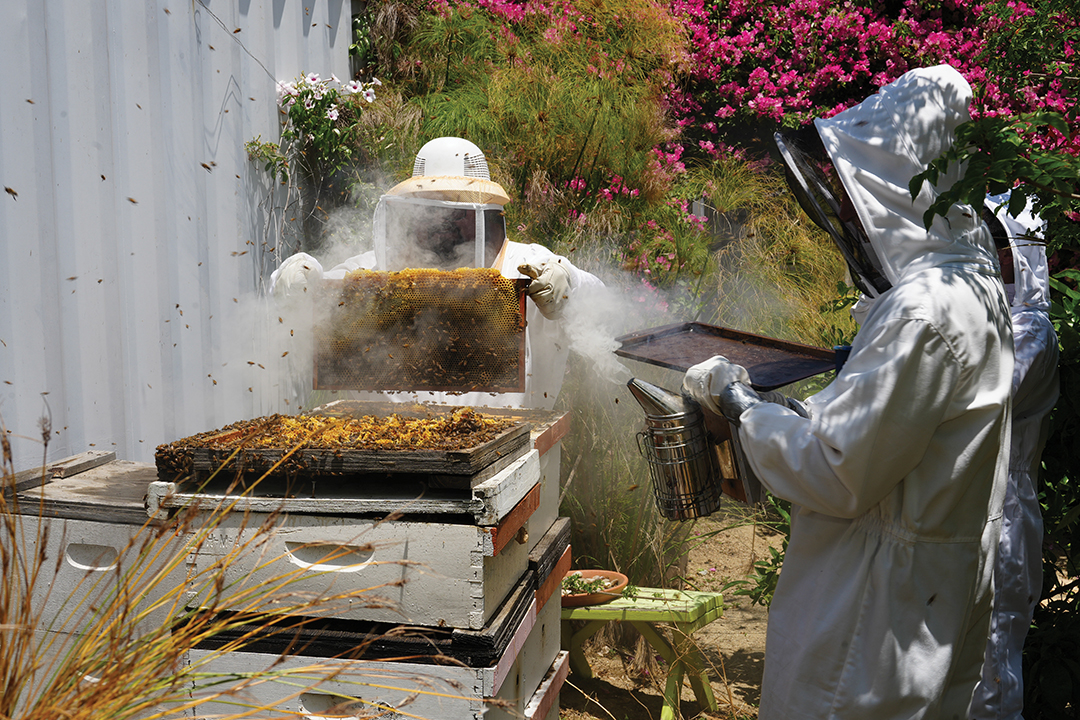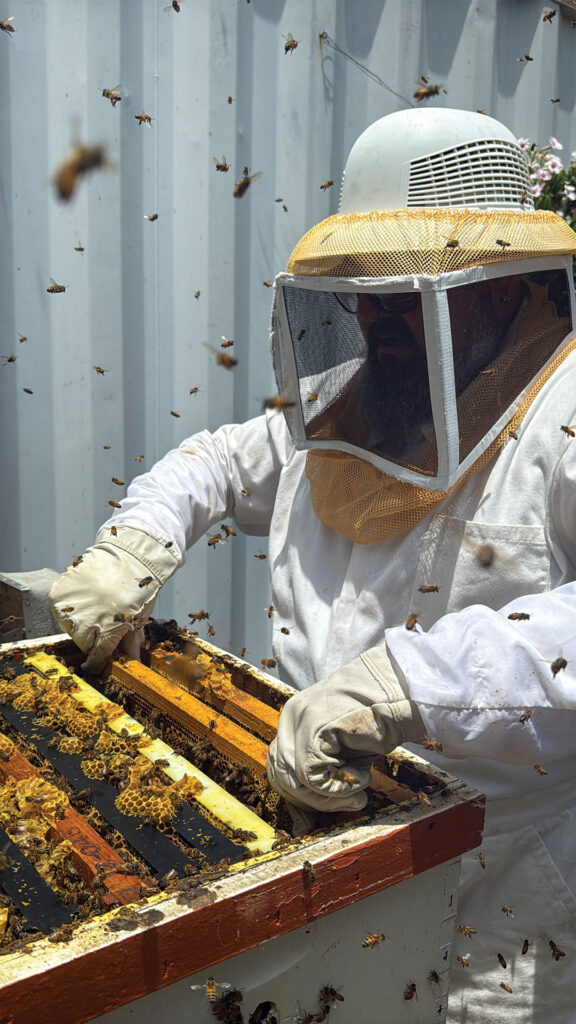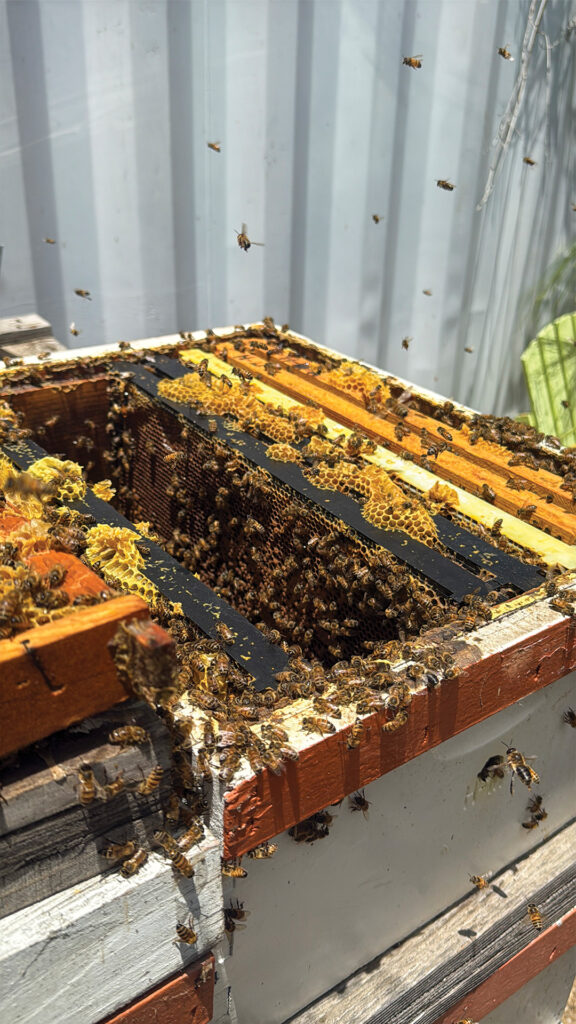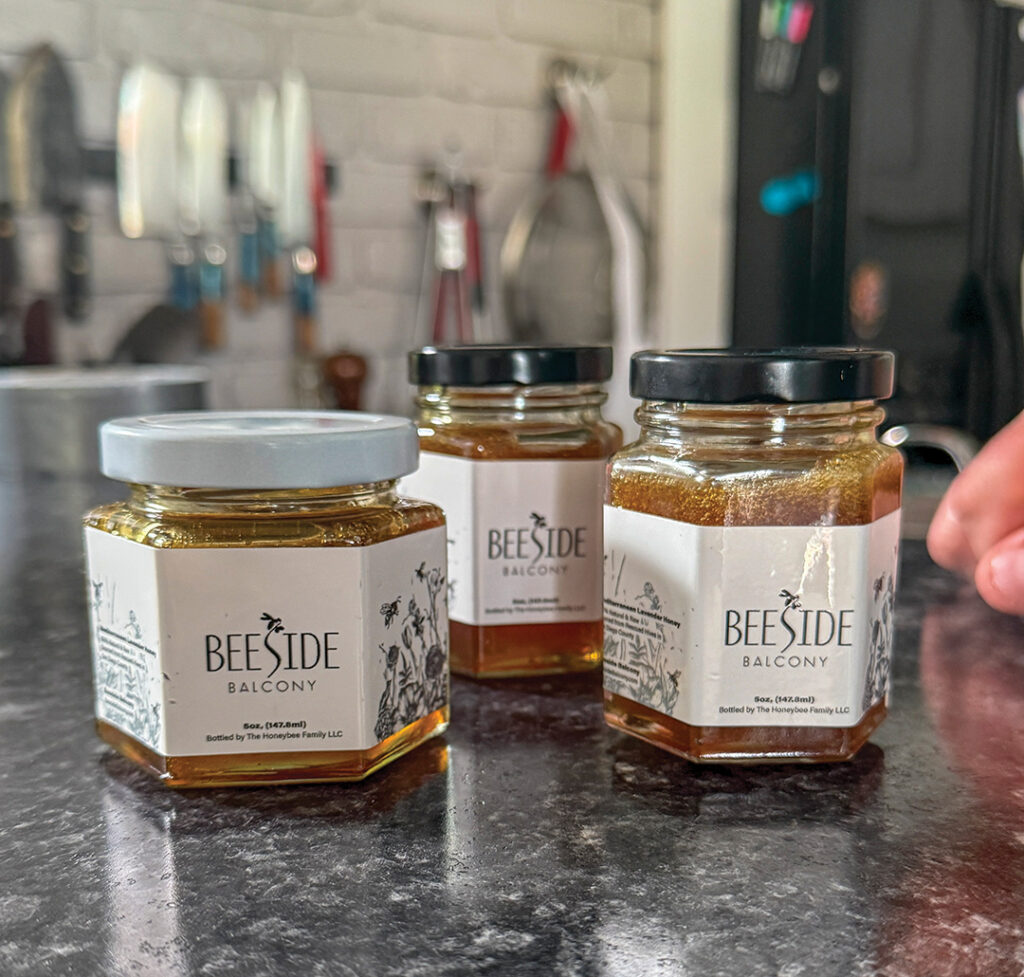Beeside Balcony turns homegrown honey into culinary gold
Christophe and Guen Cevasco produce honey from 30+ hives to sweeten signature dishes and drinks at their Del Mar and La Jolla restaurants

A restaurant with the name Beeside Balcony leads many to believe the popular Del Mar spot is named for its owners’ love for the venue’s namesake insect. Technically that’s true, but that affection was harbored by the previous owners of the second story space where Christophe and Guen Cevasco installed their popular Mediterranean concept in 2020. But the married couple did have an interest in bees — enough to keep the name — and even considered installing a clear, plexiglass beehive at the restaurant. In the end, they figured that may frighten a certain percentage of their clientele, so that was that, until one fateful day when some of those industrious insects dropped in on the Cevascos, literally.
About a week after the restaurant opened, a swarm of bees descended on the Cevascos’ residence in Vista. Over the next few days, those social creatures made themselves comfortable along the exterior of a large metal container at the edge of the front yard and began building a colony. While most would have called for an exterminator, the Cevascos instead reached out to an apiarist to help them set up a proper hive and maintain it. Working with those professionals, Christophe later extracted fresh honey from the hive, and was so impressed with its quality that he had another hive put in. That was followed by two more, two more after that, and so on.

Today, the Cevascos’ property is home to 32 hives packed with an estimated half-million busy bees. Nearly all of them are female, as the small portion of males serve the sole purpose of impregnating the queen. Once that mission has been accomplished, the males are cast out to carry out a nomadic existence away from the colony. Back at the hives, the female bees spend their days collecting pollen, which is then converted into what Christophe calls “liquid gold.”
That treasure is used in many ways at Beeside Balcony, adding sweetness, depth, and viscosity to a pair of vinaigrettes (lemon-honey, champagne) as well as a Grand Marnier reduction sauce adorning a baklava ice cream cake. It’s also a key ingredient in the restaurant’s sparkling lavender lemonade and a “Bee’s Knees” cocktail made with butterfly pea flower gin. It is also served as an accoutrement on a “Bee’s Board” with assorted cheeses, charcuterie, pita bread, and dips. In addition to using the honey in the kitchen, the Cevascos also sell jars of their liquid gold at the restaurants. (A second Beeside Balcony location opened in downtown La Jolla in 2023.) Ten percent of profits from those sales are donated to a bee-specific wildlife fund.

Last year, Christophe (who now tends to the bees on his own) extracted 130 pounds of honey from his estate hives. Extraction takes place in hotter months, typically in late spring, summer, and if it’s warm enough, early fall. The process involves puffing smoke into the hives — each of which consists of eight wooden frames coated in honey-laced wax — to subdue the bees and make them less likely to defend their territory. From there, the frames are removed and inserted into a centrifuge where the honey is separated from the comb, then filtered and jarred.
Each year’s harvests yield honey with different colors and flavor profiles based on where the bees source their pollen. While bees can travel as far as five miles a day in search of pollen, the majority of what the Cevascos’ colonies gather comes from flora in their front and back yards. That includes citrus, avocado, apple, pomegranate, persimmon, apricot, and palm trees, as well as succulents, French lavender, and oregano.
The Cevascos are enamored with their bees and all they have brought to their lives and their business. They hope to keep growing their apiary and also install a stand-alone enclosed structure in which to process the honey from their hives. This would allow for production of more jarred honey, including versions flavored with turmeric, cayenne, and other ingredients. They would also like to explore the possibility of using the wax to develop a line of skin-care products. Until then, we’re happy to enjoy the sweet rewards of their bees’ efforts on Beeside’s restaurant menu.
Click here for a behind-the-scenes look at Chef Cevasco’s homegrown honey harvest in action.








Comments